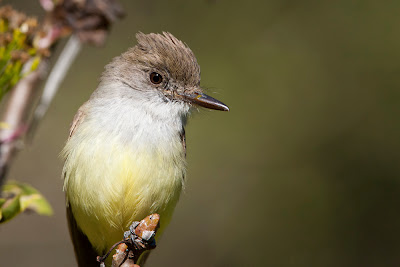 Veel Huismussen, die heel voorzichtig en schuchter de weg naar onze tuin wisten te vinden. De Ringmus die hier, ten op zichte van Weesp in grotere getale aanwezig is. Kool en Pimpelmees, die zijn hier niet op een hand te tellen. Hadden we in Weesp ongeveer 10 Turkse tortels, hier hebben we er maar 2, die nu in de maand januari al zeer verlieft in de boom naast het huis zitten te flirten naar elkaar.
Veel Huismussen, die heel voorzichtig en schuchter de weg naar onze tuin wisten te vinden. De Ringmus die hier, ten op zichte van Weesp in grotere getale aanwezig is. Kool en Pimpelmees, die zijn hier niet op een hand te tellen. Hadden we in Weesp ongeveer 10 Turkse tortels, hier hebben we er maar 2, die nu in de maand januari al zeer verlieft in de boom naast het huis zitten te flirten naar elkaar.
 Ook de Merels zijn hier van de partij en zijn al druk met het innemen van een teratorium.
Ook de Merels zijn hier van de partij en zijn al druk met het innemen van een teratorium.Het zal wel aan de zachte winter liggen, dat de vogels in januari al het voorjaar in de kop hebben.
 Verder hebben we nog als vaste gast Roodborst, Heggenmus, Houtduif, Vink, Goudvink, grote en kleine bonte specht en spreeuw in de tuin. En ja, dan hebben we ook nog de Sperwer, die omdat we de vogels voeren in onze tuin indirect mee gevoerd wordt. Omdat we zoveel Huismussen hebben trekt dat Sperwers aan voor sommige misschien wat paradoxaal, voor de ander iets wat er gewoon bij hoort. Het is een lijstje soorten die je in iedere willekeurige tuin in Nederland kan zien, niets bijzonders dus. Waar zit dan het verschil met de soortenlijst in Weesp? Wel, hier hebben we dagelijks Geelgorzen in de tuin en in de schemer komt de kerkuil. Die aan de overkant van de weg in een stal zijn nestkast heeft. Iedere avond komt hij of zij even buurten bij ons in de tuin. Dit gaat vaak gepaard met luid geroep. En dan hebben we nog de soorten die we vanuit onze tuin kunnen zien, of die we vanaf 4 augustus wel eens gezien hebben. Op dat lijstje staat de Wielewaal, Raaf, Blauwe kiekendief, Grote zilverreiger, Purperreiger, Kraanvogel en Slangearend enz.
Verder hebben we nog als vaste gast Roodborst, Heggenmus, Houtduif, Vink, Goudvink, grote en kleine bonte specht en spreeuw in de tuin. En ja, dan hebben we ook nog de Sperwer, die omdat we de vogels voeren in onze tuin indirect mee gevoerd wordt. Omdat we zoveel Huismussen hebben trekt dat Sperwers aan voor sommige misschien wat paradoxaal, voor de ander iets wat er gewoon bij hoort. Het is een lijstje soorten die je in iedere willekeurige tuin in Nederland kan zien, niets bijzonders dus. Waar zit dan het verschil met de soortenlijst in Weesp? Wel, hier hebben we dagelijks Geelgorzen in de tuin en in de schemer komt de kerkuil. Die aan de overkant van de weg in een stal zijn nestkast heeft. Iedere avond komt hij of zij even buurten bij ons in de tuin. Dit gaat vaak gepaard met luid geroep. En dan hebben we nog de soorten die we vanuit onze tuin kunnen zien, of die we vanaf 4 augustus wel eens gezien hebben. Op dat lijstje staat de Wielewaal, Raaf, Blauwe kiekendief, Grote zilverreiger, Purperreiger, Kraanvogel en Slangearend enz.



Wat hadden we nu met de telling van 2012 in onze tuin? De lijst zag er als volgt uit op de eerste plaats het Sijsje met 27 vogels op twee de plaats Pimpelmees 23 vogels, op drie de Koolmees 22 vogels, op vier de Ringmus met 16 vogels, in totaal hadden we 10 soorten.

Het is een goed initiatief van Vogelbescherming om de tuinvogels, door deze acties onder de aandacht te brengen bij de bevolking. Het is goed om de mensen meer bewust te maken van de natuur. Zeker met het huidige politieke klimaat in Nederland, kan de natuur wel een steuntje in de rug gebruiken.













